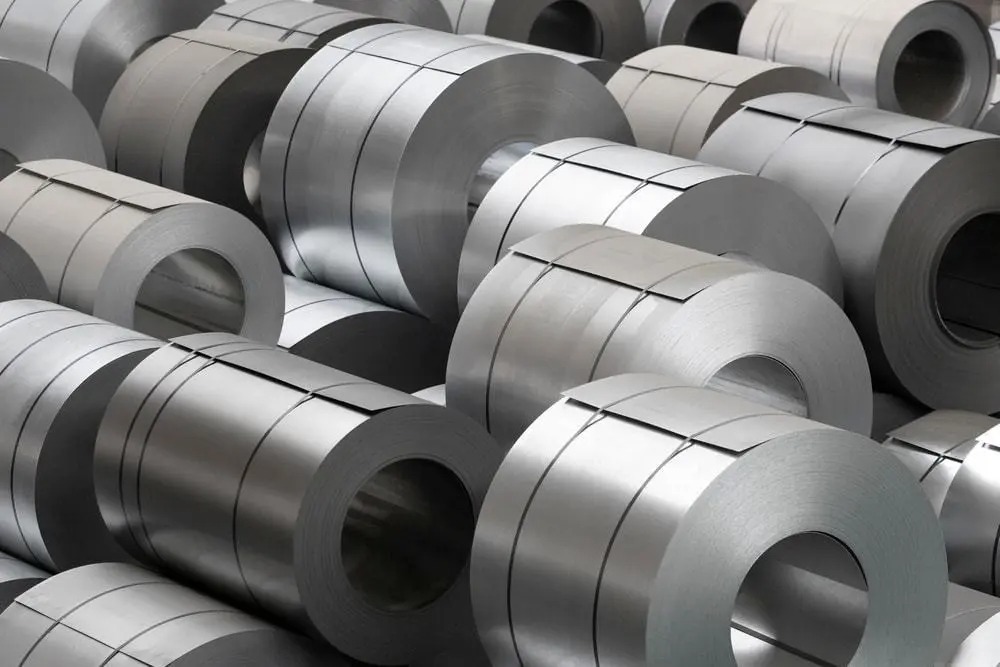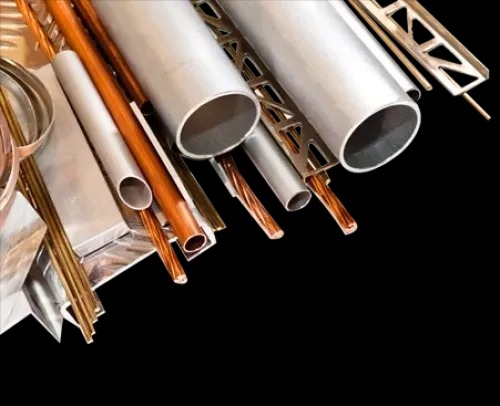
Ferrous metals
Ferrous metals include mild steel, carbon steel, stainless steel, cast iron and wrought iron. These metals are primarily used for their tensile strength and durability, particularly mild steel which helps support the tallest skyscrapers and longest bridges in the world. You can also find iron and its alloys in house construction, industrial containers, large-scale piping, automobiles, railroad tracks, most of the tools and hardware you use around the house and the knives you cook with at home.
Due to the high amounts of carbon used during their creation, most ferrous metals and ferrous alloys are vulnerable to rust when exposed to the elements. While this is not true of wrought iron, which is so pure iron that it resists oxidation, or stainless steel, which is protected due to its high chromium content. Most ferrous metals also have magnetic properties, which make them very useful in creating large motors and appliances.
Above all, ferrous metals are the most recycled materials in the world. In 2020 alone, 1.8 billion tons of steel and 500 million tons of waste materials were produced.
Non-ferrous metals
The term non-ferrous metals refers to all metals that do not fall within the group of iron or its alloys such as: aluminum, copper, silver, gold, lead, tin, titanium, alkali metals such as sodium and potassium, alkaline earth metals such as calcium and barium.
Non-ferrous metals combined with other metals, give life to a multiplicity of alloys that can improve the mechanical performance, workability, resistance to corrosion and high temperatures of the base metal.
Non-ferrous metals are usually divided into three categories, based on their volumetric mass: metals such as copper, lead, nickel, tin, zinc are defined as heavy metals having a mass greater than 5000 kg per cubic meter. Metals such as aluminum and titanium defined as light ranging from 2000 to 5000 kg per cubic meter. Metals such as magnesium with less than 2000 kg per cubic meter.
Non-ferrous metals have their own peculiarities and are mainly used where their differences from ferrous metals can provide an advantage. For example, non-ferrous metals are much more malleable than ferrous metals. Non-ferrous metals are also much lighter, making them suitable for use where strength is needed, but weight is a factor, such as in the aviation or canning industry. Because they do not contain iron, non-ferrous metals have greater resistance to rust and corrosion, which is why you will find these materials in use for gutters, water pipes, roofing and road signs. Finally, they are also non-magnetic, which makes them perfect for use in small electronic devices and as electrical cables.
When it comes to recycling, aluminum is the third most recycled material in the world. However, many other non-ferrous materials such as copper, brass and lead are relatively scarce and metallurgists rely heavily on recycling waste materials to create new ones.









